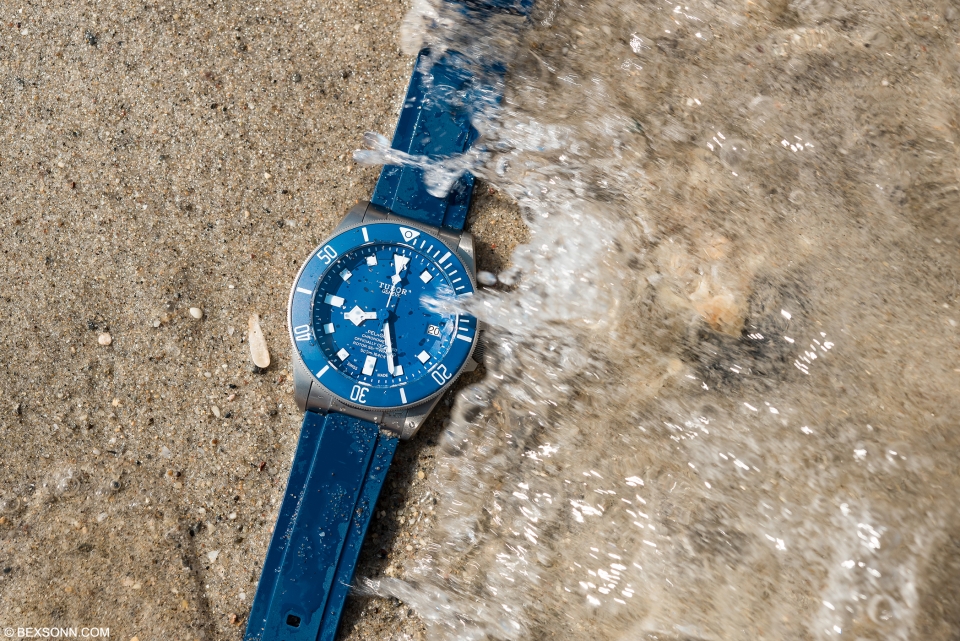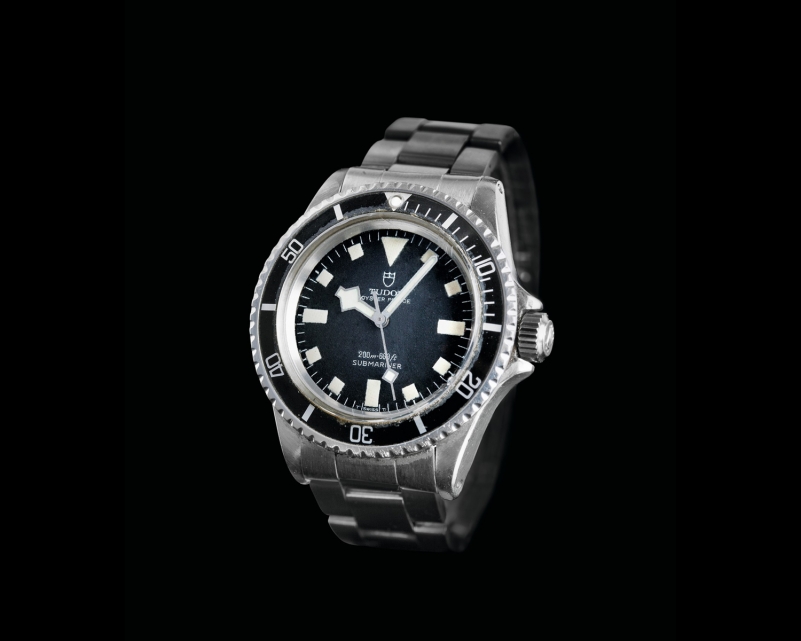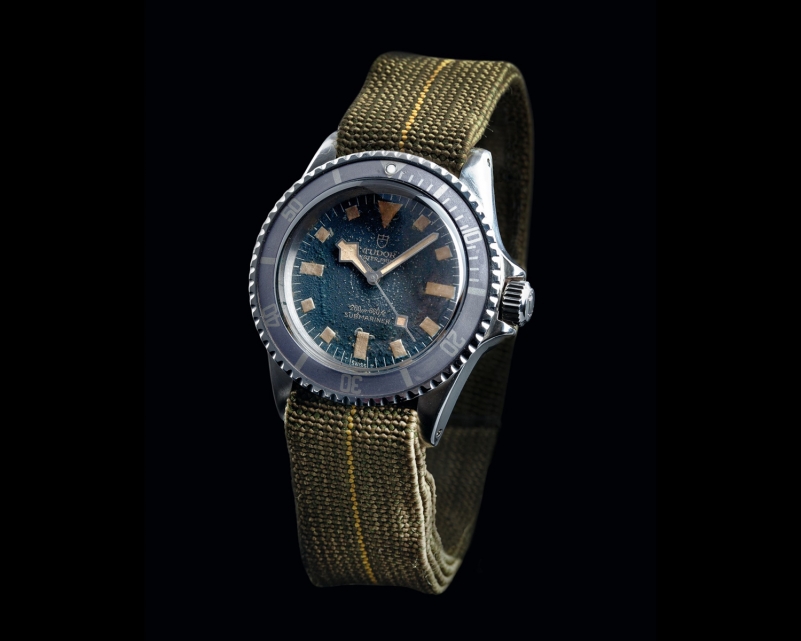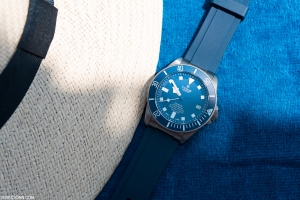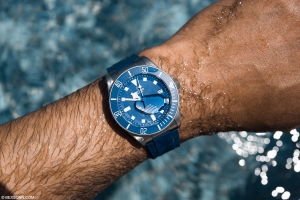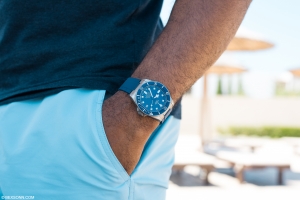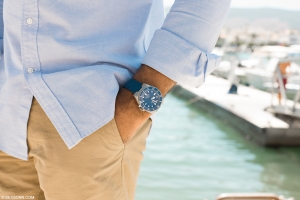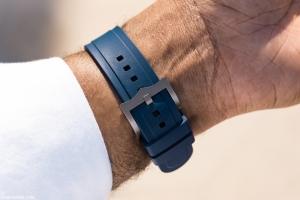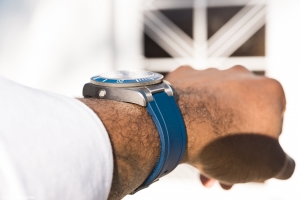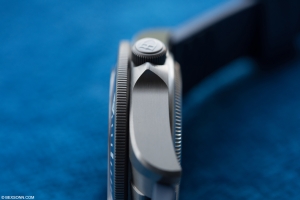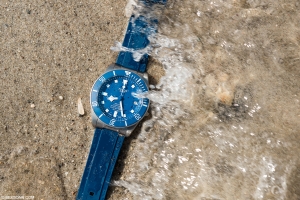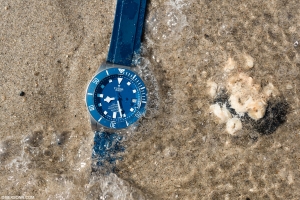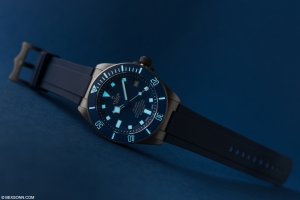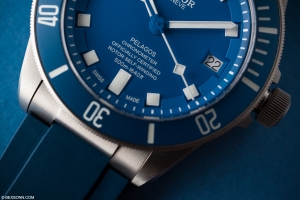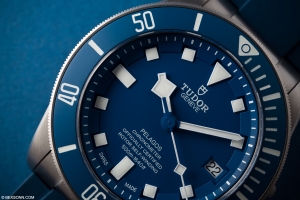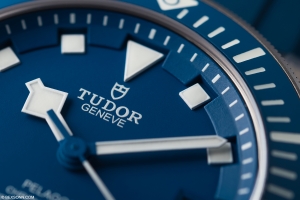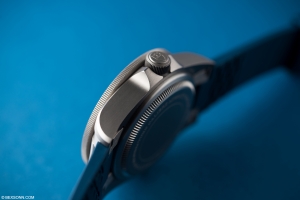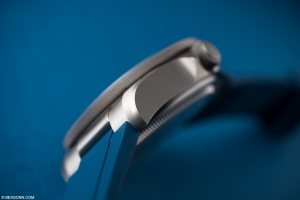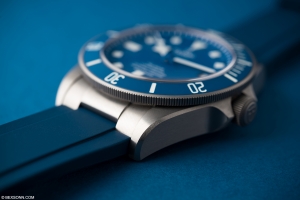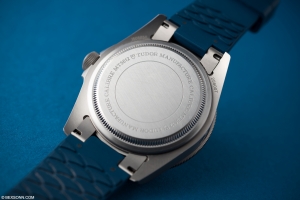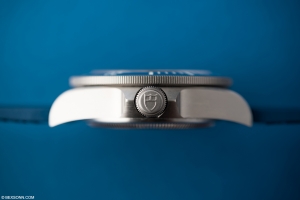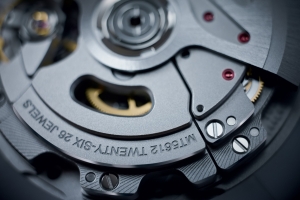Created in 1946, Tudor was the second brand created by founder of Rolex, Hans Wilsdorf. Its mission: to create watches using the unique formula of Rolex cases, which of course were made distinguishable by their waterproof screw-down case backs and crowns but would use outsourced movements. With this combination, Tudor were able to offer Rolex quality cases but at a more affordable price point.
Throughout the many years of operation Tudor would become a brand whose name, like Rolex, synonymous with robust and dependable dive watches. They became so well-known that Tudor’s dive watches were used by military forces around the world but perhaps one that has more principle is the French Marine Nationale. The Tudor Submariner perhaps possessed one of the most iconic designs around during these years; the infamous snowflake hand that adorned the reference 7016. However, by the noughties Tudor had somewhat lost their way in the watch market and had almost become forgotten.
There had been several attempts to reinvigorate the brand but these attempts came to nothing. But then something clicked and Tudor realised that the modern consumer had become fixated with their vintage pieces and had a lust for the past. It was at this point that Tudor had reached into their design archives to look at the timepieces they had created in the past to begin creating modern interpretations of those iconic pieces; one of them being this Pelagos, which was a modern take on the coveted snowflake Submariner.
In 2012, Tudor introduced the Pelagos, self-winding, divers watch, with a case and bracelet made entirely of Titanium. However, just a year ago Tudor re-introduced the Pelagos, which now housed one of their first in-house manufacture movements and this was of course a very bold statement. Why? Because Tudor had always been seen as the younger and more affordable sister to Rolex and Tudor had always made this very clear. Prior to this, a way that Tudor made sure they kept costs low was to make use of third-party movements, such as ETA. However, when they announced they’d start to make their own movements the inevitable questions were ask; how will this affect prices? We shall get to that but first, let’s explore the Pelagos.
THE PELAGOS
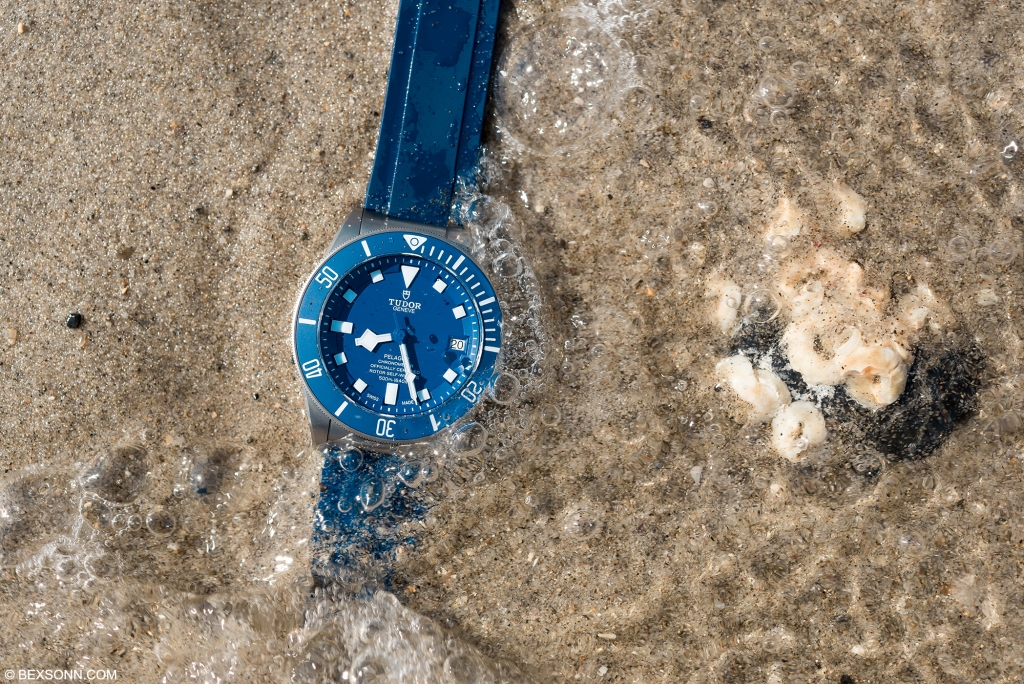 While the Pelagos is indeed a very new name for Tudor’s main diving wristwatch there is no mistaking it takes many of its design cues from the Tudor “Snowflake” Submariner. The titanium case (just for those of you who were unaware this is the first watch to come from the Rolex family fashioned from titanium) measures a more modern and arguably large 42mm but what it does incorporate are subtle hints of yesteryear. Such as the chamfered lugs, which is something that not even Rolex do themselves anymore but perhaps one of the most notable nods to the past is the use of pointed crown guards, or more aptly named by our Italian amici, “cornino.” Another nod to the time when Rolex went from using square crown guards to pointed crown guards to make screwing and unscrewing the triplock crown much more user-friendly.
While the Pelagos is indeed a very new name for Tudor’s main diving wristwatch there is no mistaking it takes many of its design cues from the Tudor “Snowflake” Submariner. The titanium case (just for those of you who were unaware this is the first watch to come from the Rolex family fashioned from titanium) measures a more modern and arguably large 42mm but what it does incorporate are subtle hints of yesteryear. Such as the chamfered lugs, which is something that not even Rolex do themselves anymore but perhaps one of the most notable nods to the past is the use of pointed crown guards, or more aptly named by our Italian amici, “cornino.” Another nod to the time when Rolex went from using square crown guards to pointed crown guards to make screwing and unscrewing the triplock crown much more user-friendly.
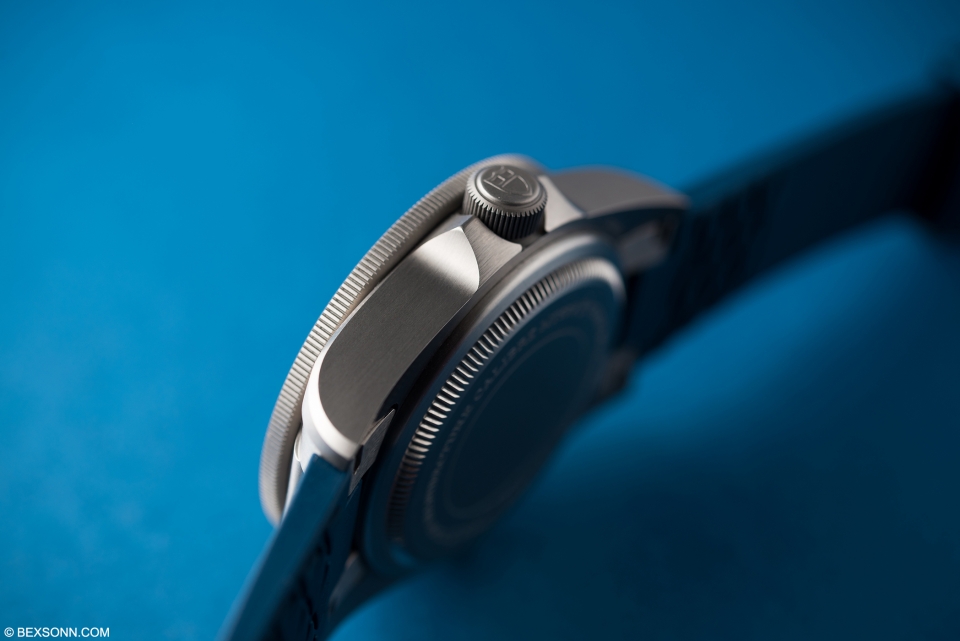 On the opposite side of the case you’ll notice the inclusion of a HEV (Helium Escape Valve), which may seem superfluous at times but it’s a nice touch and you have to remember the key role that Rolex played in its development. That said, while I think the 42mm of this case does sound kind of large, it works and at no point felt uncomfortable. Its thickness is perhaps a tad bigger than one would’ve hoped for, yet I was still able to sneak it under the cuff.
On the opposite side of the case you’ll notice the inclusion of a HEV (Helium Escape Valve), which may seem superfluous at times but it’s a nice touch and you have to remember the key role that Rolex played in its development. That said, while I think the 42mm of this case does sound kind of large, it works and at no point felt uncomfortable. Its thickness is perhaps a tad bigger than one would’ve hoped for, yet I was still able to sneak it under the cuff.
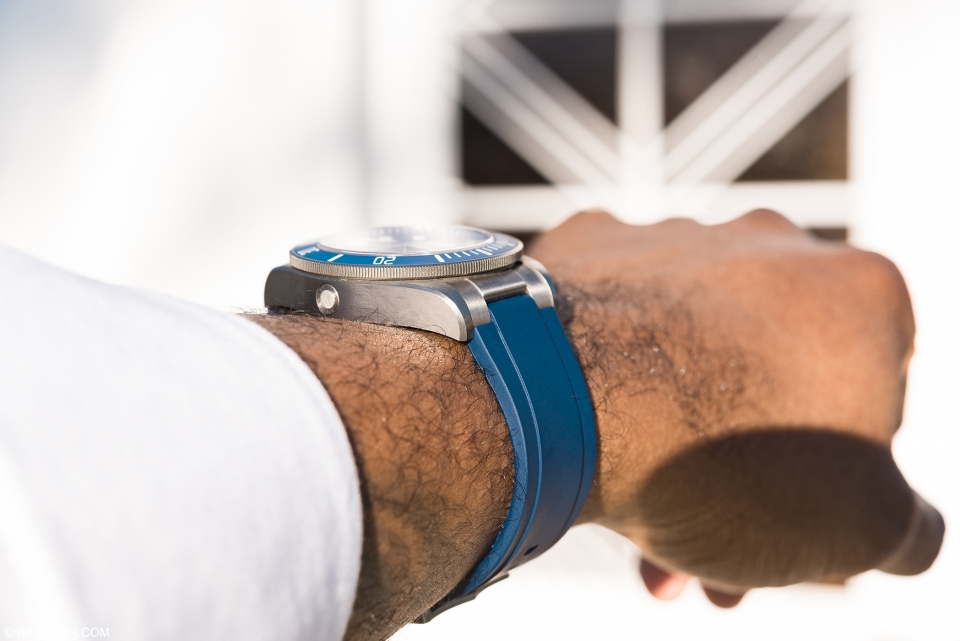 It goes without saying that no dive watch would be complete without the all-important graduated diving bezel, which in this case is luminous too, to aid the wearer in those deep dark depths of the sea. The bezel insert on all new Rolex Submariner’s are made of ceramic that have a mirror finish, on the Pelagos the bezel is injected with a matte ceramic compound, which is in fitting with the case. However, if I had to be pernickety, the only thing that I’d say the bezel could do with is a pearl at 12 o’clock. Instead it has a triangle with a cut out circle that sort of mimics a pearl, a faux pearl would’ve been a nice touch.
It goes without saying that no dive watch would be complete without the all-important graduated diving bezel, which in this case is luminous too, to aid the wearer in those deep dark depths of the sea. The bezel insert on all new Rolex Submariner’s are made of ceramic that have a mirror finish, on the Pelagos the bezel is injected with a matte ceramic compound, which is in fitting with the case. However, if I had to be pernickety, the only thing that I’d say the bezel could do with is a pearl at 12 o’clock. Instead it has a triangle with a cut out circle that sort of mimics a pearl, a faux pearl would’ve been a nice touch.
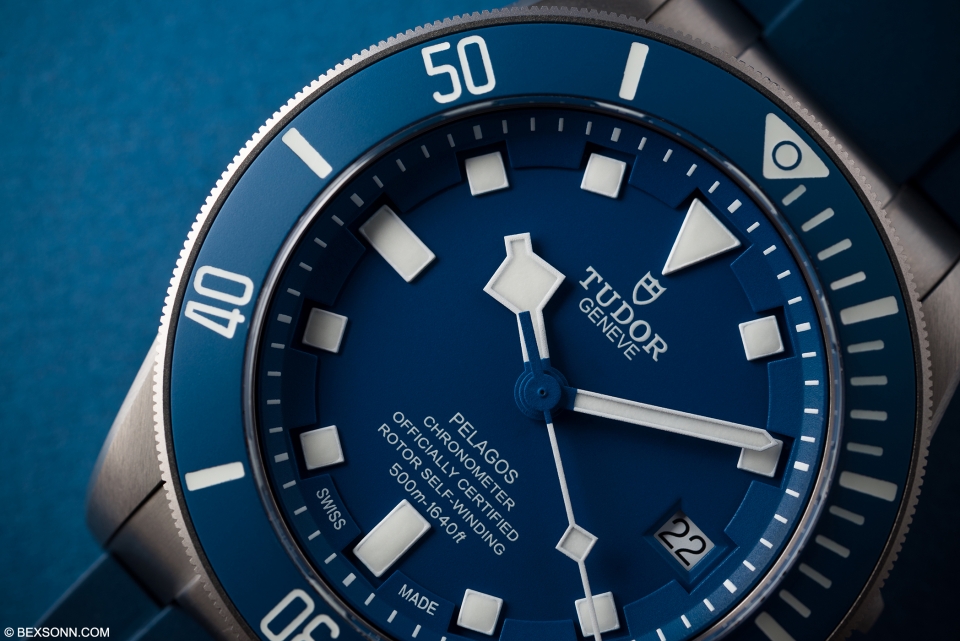 But without doubt the most poignant design trait of the Pelagos is the blue dial, which is again a nod to the 1970s ref 9401/0 Tudor Submariner Snowflake. The dial of the Pelagos is built up in layers, which affords a much appreciated and perhaps required three-dimensional effect. As already mentioned the deep blue dial makes use of square hour markers with a triangle at 12 o’clock, rectangle markers at 6 and 9 o’clock, as well as a date aperture at 3 o’clock. This appears cleaner due to the omission of the marker that was clearly visible on the earlier Pelagos, which I might add doesn’t make use of a cyclops. Another subtle doff to the cyclops-less Rolex Sea-Dweller and an indication that this is Tudor’s serious diving watch.
But without doubt the most poignant design trait of the Pelagos is the blue dial, which is again a nod to the 1970s ref 9401/0 Tudor Submariner Snowflake. The dial of the Pelagos is built up in layers, which affords a much appreciated and perhaps required three-dimensional effect. As already mentioned the deep blue dial makes use of square hour markers with a triangle at 12 o’clock, rectangle markers at 6 and 9 o’clock, as well as a date aperture at 3 o’clock. This appears cleaner due to the omission of the marker that was clearly visible on the earlier Pelagos, which I might add doesn’t make use of a cyclops. Another subtle doff to the cyclops-less Rolex Sea-Dweller and an indication that this is Tudor’s serious diving watch.
The Pelagos makes use of a snowflake-shaped hour hand and a seconds’ hand with a diamond square. But what I did find quite interesting about the dial was the way the hands appear to float, this is simply because the centre of the hands makes use of the same colour as the dial, making the dial appear larger too. Another notable difference from the first Pelagos introduced in 2012, is the inscription of the watch name, which now graces the dial above the COSC text and depth rating. Yes, I can just hear some of you now saying “meh, why is there an essay on the dial?” This is just something that Rolex have done for years, so things are going to be no different with Tudor, it’s just something you’ll have to get used to.
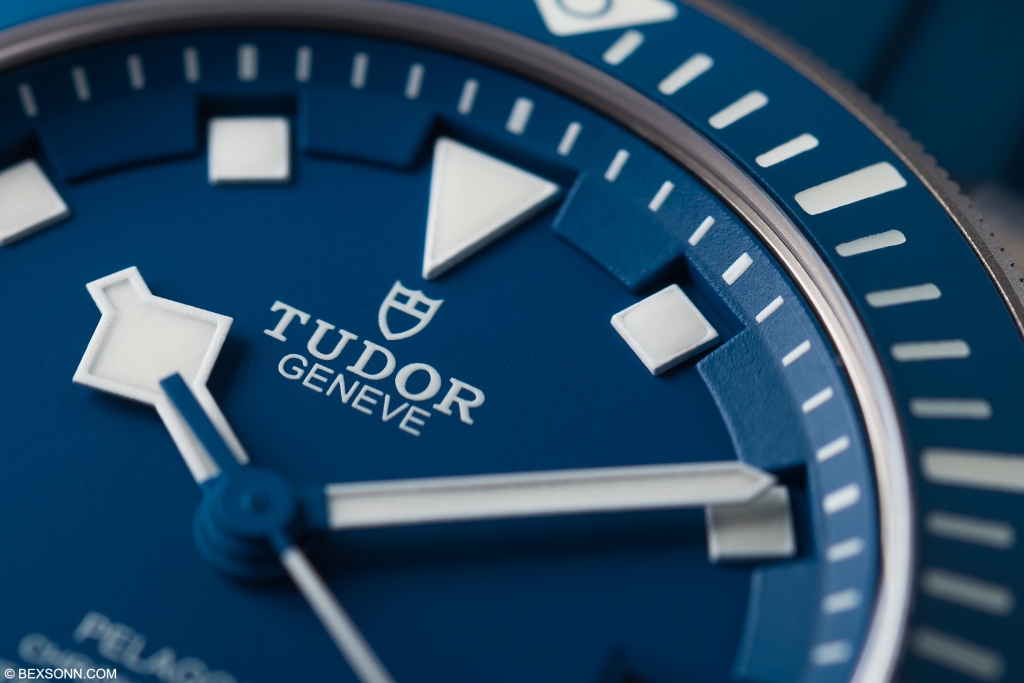 I think one of the niceties of this Tudor Pelagos, is the way in which the flange is incorporated into the dial. Each hour marker is nicely enveloped by the flange, to which the minute track is also applied. This is where that three-dimensional effect comes in and admittedly, without it the dial would perhaps look rather flat. The super-luminova glows a very bright and incandescent blue, as you can see from the image below, again, aiding those who venture into the deep.
I think one of the niceties of this Tudor Pelagos, is the way in which the flange is incorporated into the dial. Each hour marker is nicely enveloped by the flange, to which the minute track is also applied. This is where that three-dimensional effect comes in and admittedly, without it the dial would perhaps look rather flat. The super-luminova glows a very bright and incandescent blue, as you can see from the image below, again, aiding those who venture into the deep.
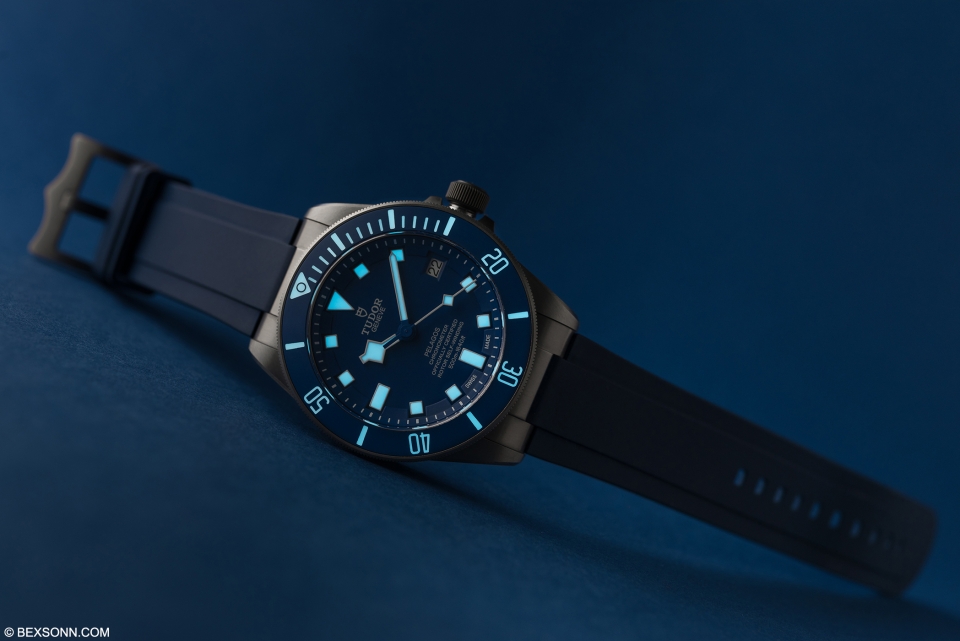 Another talking point of this Pelagos is the fact it makes use of an in-house movement. The previous iteration made use of the out sourced ETA 2824, this however, uses the MT5612 a calibre which has also been deployed within the North Flag but because it also has a power reserve indicator there is a slight change in the calibre; the MT5621. This new calibre MT5612 has a power reserve of 70 hours, which is double what the previous ETA afforded, meaning if you don’t wear it over the weekend, you can slap it on on a Monday morning and it will still be at the correct time and date. The movement as already mentioned is COSC certified but what does this do to cost over the previous version? Not much really the difference is only £180. Not bad huh?
Another talking point of this Pelagos is the fact it makes use of an in-house movement. The previous iteration made use of the out sourced ETA 2824, this however, uses the MT5612 a calibre which has also been deployed within the North Flag but because it also has a power reserve indicator there is a slight change in the calibre; the MT5621. This new calibre MT5612 has a power reserve of 70 hours, which is double what the previous ETA afforded, meaning if you don’t wear it over the weekend, you can slap it on on a Monday morning and it will still be at the correct time and date. The movement as already mentioned is COSC certified but what does this do to cost over the previous version? Not much really the difference is only £180. Not bad huh?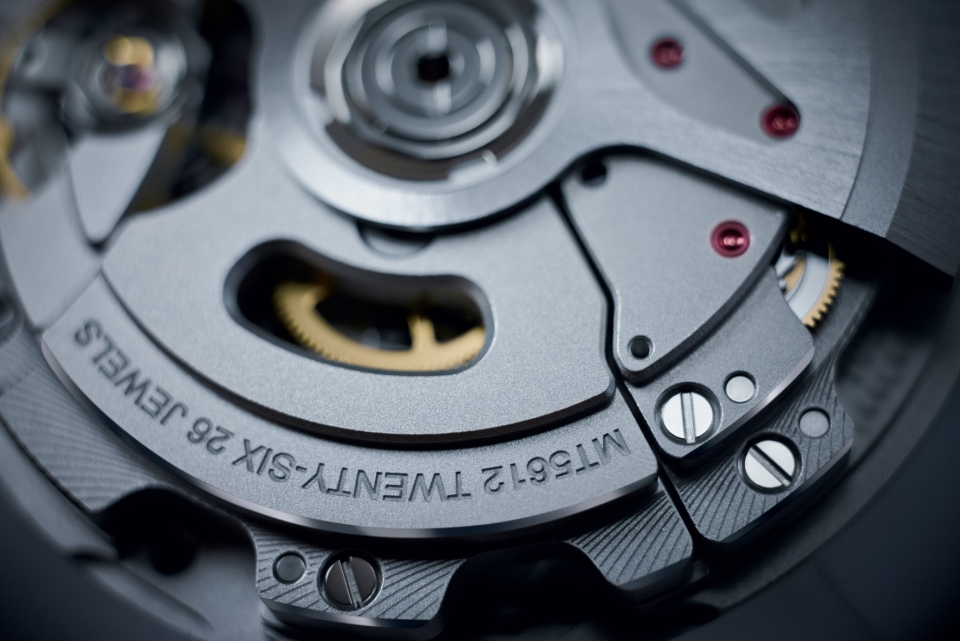
What Is The Tudor Pelagos Like To Wear?
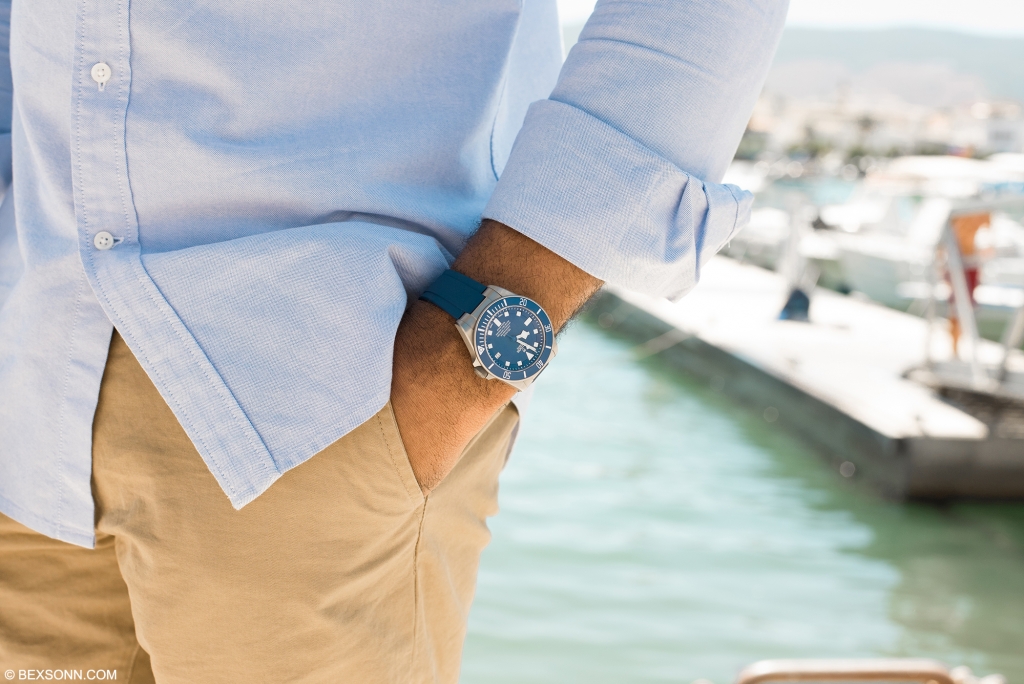 The Tudor Pelagos without doubt is a large watch, yet it is in no way uncomfortable to wear. At no point did it ever feel cumbersome but it does have serious wrist presence, especially considering most of my daily wearers are between 36 & 40 mm. That said, after a few days in, the size of the Pelagos grew on me and this is where I started to appreciate it a lot more. As already mentioned the design of the Pelagos conjures up nostalgia; the bevelled lugs, the pointed crown guards but most of all the use of the snowflake, the stuff that watch nerds just go crazy for. This for me is what Tudor have been great at doing lately and hopefully will continue to do.
The Tudor Pelagos without doubt is a large watch, yet it is in no way uncomfortable to wear. At no point did it ever feel cumbersome but it does have serious wrist presence, especially considering most of my daily wearers are between 36 & 40 mm. That said, after a few days in, the size of the Pelagos grew on me and this is where I started to appreciate it a lot more. As already mentioned the design of the Pelagos conjures up nostalgia; the bevelled lugs, the pointed crown guards but most of all the use of the snowflake, the stuff that watch nerds just go crazy for. This for me is what Tudor have been great at doing lately and hopefully will continue to do.
Tudor loaned this watch to me just before I went on holiday this year to the Greek Island of Kos, at my request, simply because I was looking for a good sports/holiday watch that not only needed to be waterproof but also had to be affordable too.
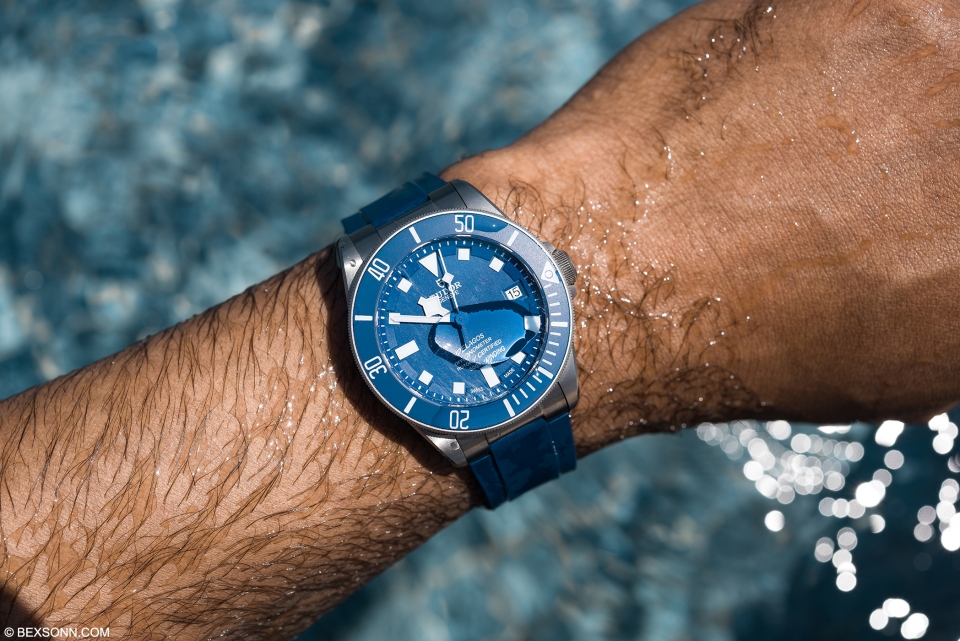 Personally I think this has to be one of the best sports watches on the market in this price bracket. Living with it on holiday was an enjoyable experience but even more interesting was how attached I became to it, not to mention, despite its rather bold colour, how understated it was and how well it worked with casual evening attire. As you’ll no doubt notice, I opted for the rubber strap, simply because I think this is perhaps more rugged than the bracelet and especially being on holiday, you don’t have to worry about dinking it against stone or metal objects – plus we all know how unattractive titanium looks once scratched.
Personally I think this has to be one of the best sports watches on the market in this price bracket. Living with it on holiday was an enjoyable experience but even more interesting was how attached I became to it, not to mention, despite its rather bold colour, how understated it was and how well it worked with casual evening attire. As you’ll no doubt notice, I opted for the rubber strap, simply because I think this is perhaps more rugged than the bracelet and especially being on holiday, you don’t have to worry about dinking it against stone or metal objects – plus we all know how unattractive titanium looks once scratched.
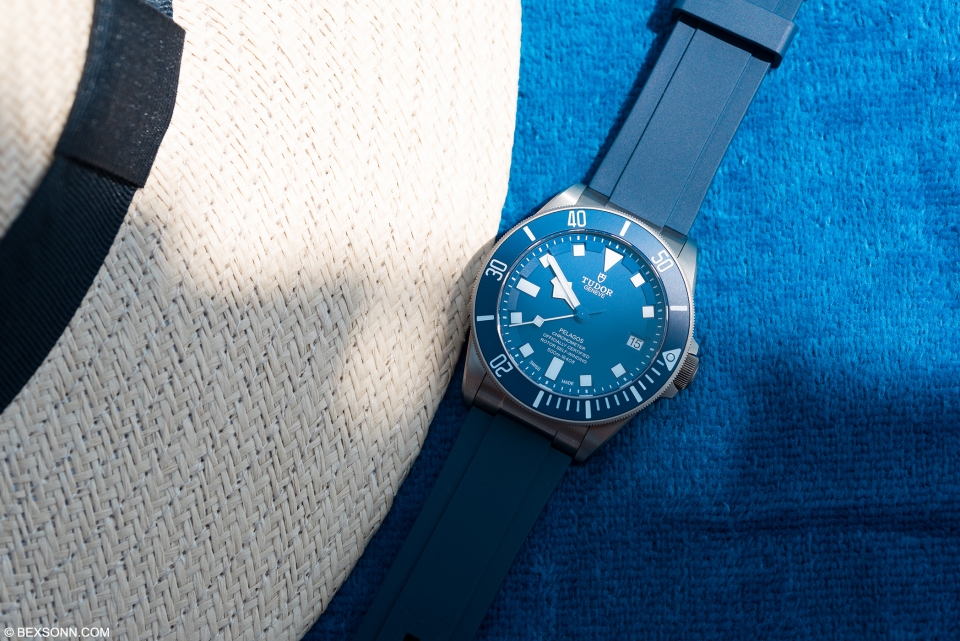 That said, what are you getting for your money? A dive watch that is waterproof up to a depth 500m, one with heritage, great design, taking cues from its historic predecessors and one which truly wears great on the wrist. Arguably and above all, the Pelagos is a timepiece with an in-house manufactured Tudor calibre, and to top it all off it’s a charming and reliable wrist companion. What else could you ask for? Oh and to think you get all of this for just £3,020. In short, it was an absolute pleasure to wear the Pelagos and I think it is an exceptionally well thought-out watch by Tudor that has mass appeal but also a watch for guys that have an appreciation of vintage watches from the 20th century.
That said, what are you getting for your money? A dive watch that is waterproof up to a depth 500m, one with heritage, great design, taking cues from its historic predecessors and one which truly wears great on the wrist. Arguably and above all, the Pelagos is a timepiece with an in-house manufactured Tudor calibre, and to top it all off it’s a charming and reliable wrist companion. What else could you ask for? Oh and to think you get all of this for just £3,020. In short, it was an absolute pleasure to wear the Pelagos and I think it is an exceptionally well thought-out watch by Tudor that has mass appeal but also a watch for guys that have an appreciation of vintage watches from the 20th century.
For more information on the Pelagos with in-house movement, visit the official Tudor website.
